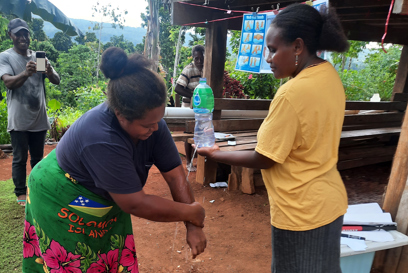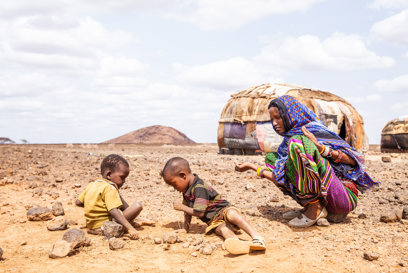In April 2024 Nicole Chehine, Associate Director of Fundraising and Communications, and Tara Harvey, Media Lead, visited the Lemakot Health Centre in the New Ireland Province of Papua New Guinea to collect photos and videos of a program focused on improving the facility.
The centre at Lemakot was first established as an aid post in 1912 and has a long history of delivering healthcare to people in the New Ireland province. By the 1970s, under the stewardship of the Missionary Sisters of the Most Sacred Heart of Jesus, it became the Sacred Heart Health Centre.
While visiting the team learnt the last maintenance work, beyond a little painting here and there, took place in 1987. That was, until this year, when funding from Caritas Australia and Catholic Church Health Services, saw the roof replaced.
While there the team heard just how challenging it is for rural health centres to address work of this magnitude. Over 90% of people in Papua New Guinea live in rural areas and utilise local health centres like the one in Lemakot, but the government largely funds health centres in urban and more regional areas. What’s more, the cost of supplies in Papua New Guinea is high, with record inflation reducing purchasing power for everybody, but especially those on low incomes in rural areas.
All this meant the work was seriously overdue with a rusty roof, full of holes, creating a serious impediment to healthcare delivery. Some of its impacts were obvious – rainwater leaking into treatment rooms and equipment storage areas is evidently a hygiene concern. Nurses having to manage buckets of water and fight to keep areas dry for patients was also a clear source of frustration, and a poor use of their specialist skills.
However, the condition of that roof was also holding up other fundamental improvements to the health centre. It had no running water because harnessing rainwater runoff from the roof to fill water tanks was not an option. Not only would the water have been rusty, but much of it would never have reached gutters for catchment, as much of it was winding up inside the buildings instead. Alongside this, without watertight buildings, a safe electricity supply was not possible.
When the Caritas team arrived, the roof was firmly on, sealing the building, which had also been newly repainted. Several water tanks were up and running, and the lights were on. People described how amazing it was to see the place lit up at night, saying it looks like a little city up on the hill. Before that, any treatment taking place after sundown would have to be lit with battery powered torches and lamps.
No wonder then that the Caritas Australia and CCHS teams were treated to the very best of Papua New Guinean hospitality, with a reopening event attended by the Governor’s office, Bishop Roland Vunuvung, the full complement of Lemakot Health Centre staff, including Health Manager Father Justyn Amnino, and many locals. Local tribal leaders were also in attendance and performed a traditional welcome for all the guests of honour.
All guests addressed the crowd, with Caritas Australia and CCHS then being gifted taro, a pig, and local necklaces made from seashells. Members of the local community performed a dance to present the Matron of the health centre with the keys, ahead of the doors being re-opened and blessed by the bishop.
Tara Harvey, Media Lead, said of the experience, “The community in Lemakot welcomed us in a way that was uniquely sincere and heartwarming. The whole ceremony was so vibrant and such a happy affair but underscored by some serious issues. The roof is on, and the impact has been huge, but we left aware that there’s much more to be done. Perinatal complications are the leading cause of death in Papua New Guinea, with 580 mothers dying each year. Children in rural areas are twice as likely to die before their 5th birthday. Life expectancy is 63 years compared to 85 in Australia.”
“All this meant we left Lemakot with our hearts full of love, and our minds full of ideas for a better future.”

















